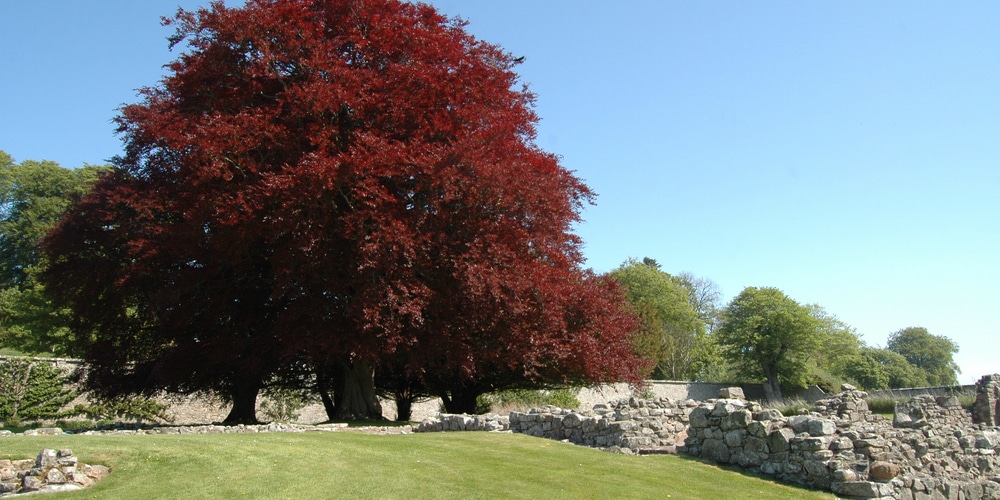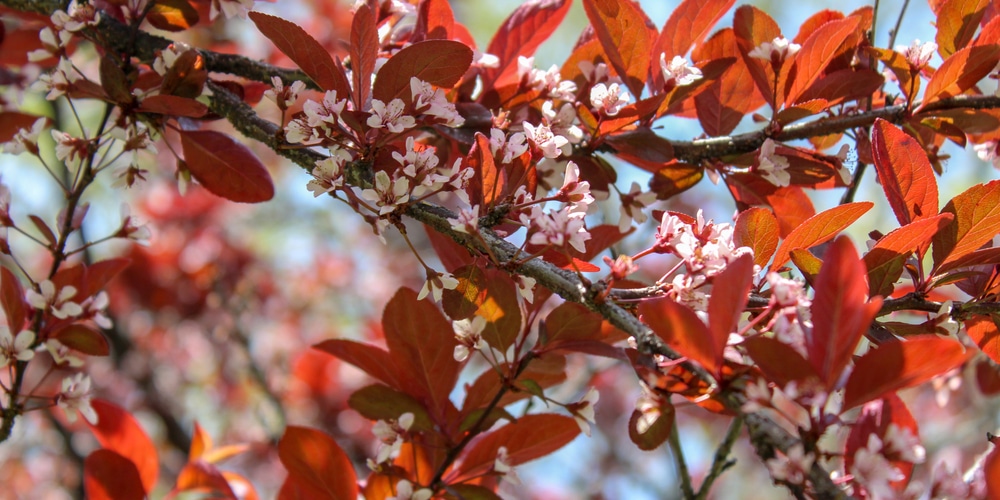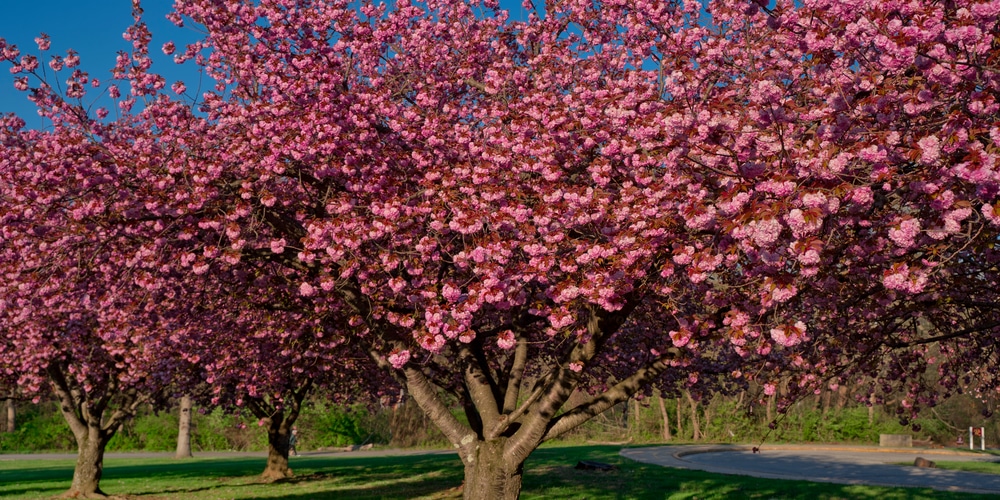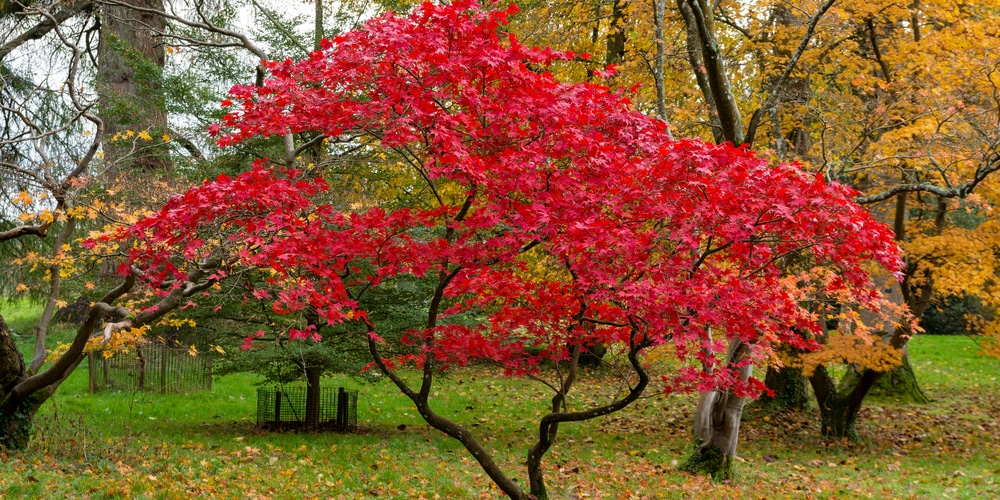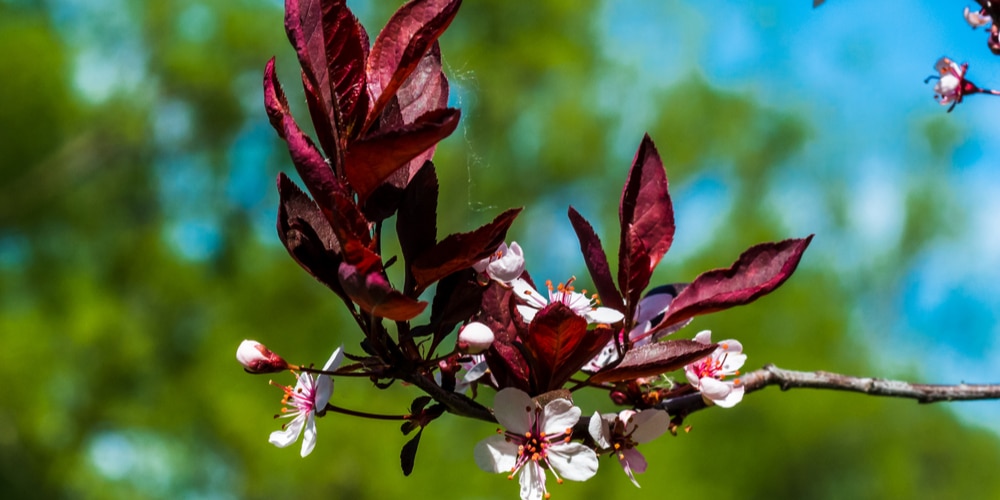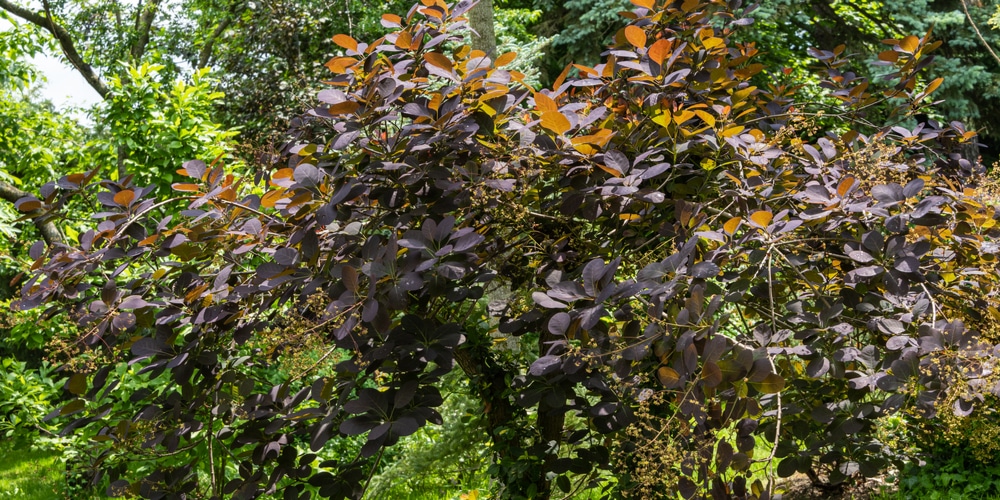There are truly some stunning trees out there. While they can all help you create a more attractive landscape, they can also add a splash of color. If you think green-leaved trees are boring, you may enjoy this list of trees with burgundy leaves.
Using plants of different colors can make a considerable difference in how your yard looks. Imagine having a plant that displays the typical colors of the fall season all year round. Wouldn’t that be appealing? If you want to add a tree with burgundy leaves in your garden, pay close attention to this guide.
7 Great Trees With Burgandy Leaves
Crimson King Maple
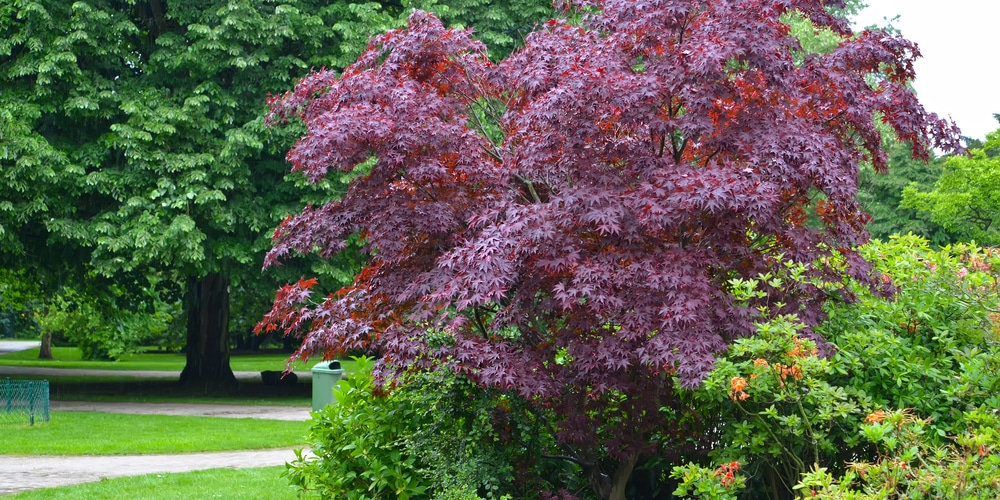
The Crimson King Maple is a summery tree that can grow up to 45 feet in height under the right conditions. The tree produces attractive burgundy leaves all summer long, which turn dark maroon in the fall before falling.
Crimson King Maple, also known as Norwegian Maple, is a hardy species that tolerate shade, drought, and warm temperatures. It can thrive in various conditions and is not too picky concerning the amount of light it receives and soil nutrients it gets. However, it might cause some trouble as its roots can be aggressive. Plant it away from foundations and walls.
Copper Beech
Copper beech produces purply leaves and beechnuts, edible for humans and wildlife. Its unique foliage makes this tree the ideal addition to any garden that needs some character. Copper Beech falls under the low-maintenance category: it is not susceptible to diseases and pest infestations and can grow anywhere with full sun and well-drained moist soil. If you live in a dry area, you may want to pick another tree, as this species has a low drought tolerance.
Purple Leaf Plum Tree
The purple leaf plum is an elegant tree with reddish leaves and fragrant pale pink to white flowers: during the summer, it will seem like you live in a fairy tale! While it is a relatively short-lived tree and requires moderate maintenance, planting one in your garden will be worth the effort.
During the spring, you’ll be able to enjoy the beautiful blooming of its numerous flowers, which will add plenty of colors to your yard and attract beneficial pollinators to your outdoor space. Be aware: they are susceptible to many diseases and attract pests!
Red Silver Flowering Crabapple
Crabapple trees are a stunning addition to any garden that will give you beauty to enjoy all year round. Red Silver Flowering Crabapple produces oval deep red leaves. You can also find pale pink and green varieties.
Despite its delicate look, this tree is quite hardy. It grows well in full sun or partial shade and adapts to any well-drained soil with adequate care. During the spring, the tree produces deep red blooms, while in the summer, it grows purple edible fruits that make delicious jams.
Japanese Maple
Japanese Maples are among the most popular small landscape trees. They can grow across various USDA hardiness zones (it can even grow in Texas) and don’t go above 25 feet in height. If you have limited space, you can consider planting a dwarf variety. Its unique leaves change color with the season. You’ll get purple leaves in spring which become gradually red during the summer and deeper in the fall.
Purple Leaf Sand Cherry
Like the purple plum tree, the purple cherry tree produces small fruits suitable to wildlife and stunning fragrant flowers. Because of their small size, these trees can suit most gardens. You can grow them even in cold climates, as they have a tolerance to low temperatures. They thrive in USDA hardiness zones between 2 and 8. They need full to partial sun and moist, well-drained soil.
Cotinus Grace Smoke Tree
The Cotinus Smoke tree takes its name from the dense foliage that resembles a cloud of smoke. Its feathery flower and large rounded leaves make Cotinus the perfect addition to any landscape, especially the most elegant ones. Its deep red leaves turn purple in the summer.
While it is not particularly hard to care for, this Smoke tree requires full sun, regular watering, and fertile soil to thrive. With proper care, this tree can perform well even in rocky soil!
Trees With Burgundy Leaves: The Bottom Line
With this list, you must have found at least one tree with burgundy leaves that suits your taste. While the focus of this article is on burgundy, you might be looking for a little more pop in your leaves. If so, check out our list of trees with leaves that stay red all year.
Before planting a tree in your garden, ensure you can provide it with all it needs to thrive. Even if you pick a low-maintenance variety, you’ll have to keep an eye on your tree!
